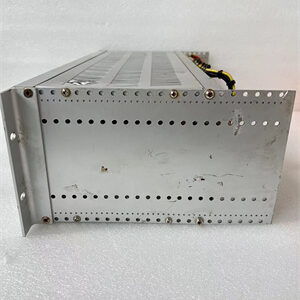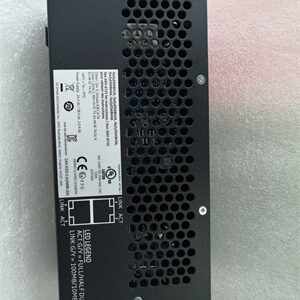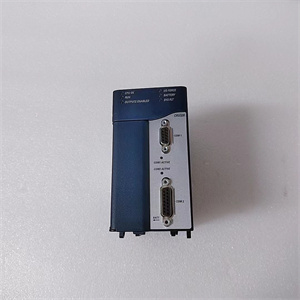Description
Detailed Parameter Table
| Parameter Name | Parameter Value |
| Product Model | IS200EMIOH1A |
| Manufacturer | General Electric (GE) |
| Product Category | Excitation System Enhanced I/O Interface Module (EX2100 Excitation Control Series) |
| Core Function | I/O signal conditioning & conversion; control system synchronization; data buffering; fault isolation |
| Input Signal Types | Analog (4–20 mA, 0–10 V), digital (dry contact, TTL), RTD (Pt100, Ni100), thermocouple (J/K/T) |
| Input Channels | 12 analog inputs, 8 digital inputs, 4 RTD/thermocouple inputs |
| Output Channels | 8 analog outputs (4–20 mA/0–10 V), 6 digital outputs (24 V DC, 2 A) |
| Communication Interfaces | GE EX2100 backplane bus (proprietary); Modbus RTU (for legacy device integration) |
| Signal Conversion Accuracy | ±0.05% (analog signals); ±0.1 °C (RTD/thermocouple) |
| Isolation Voltage | 1000 Vrms (input/output to ground); 500 Vrms (channel-to-channel) |
| Power Requirement | 24 V DC (redundant inputs, 22–26 V DC); 4.5 W maximum power consumption |
| Operating Temperature | -40 °C to +85 °C (-40 °F to 185 °F) |
| Humidity Range | 5%–95% (non-condensing) |
| Physical Dimensions | 160 mm × 108 mm × 25 mm (6.30 in × 4.25 in × 0.98 in) [EX2100 chassis-compatible] |
| Mounting Method | EX2100 chassis slot mount (direct backplane connection) |
| Protection Features | Overcurrent protection (3 A per digital output); overvoltage clamp (15 V DC for analog inputs); ESD immunity ±15 kV (air)/±8 kV (contact) |
| Environmental Resistance | Vibration: 0.05 g RMS (57–250 Hz); Shock: 10 g (22 ms, half-sine) |
| Compliance Standards | UL 508, IEC 61010-1, IEC 61326-1 (EMC), RoHS 3, CE |
| Weight | ~240 g (8.47 oz) |
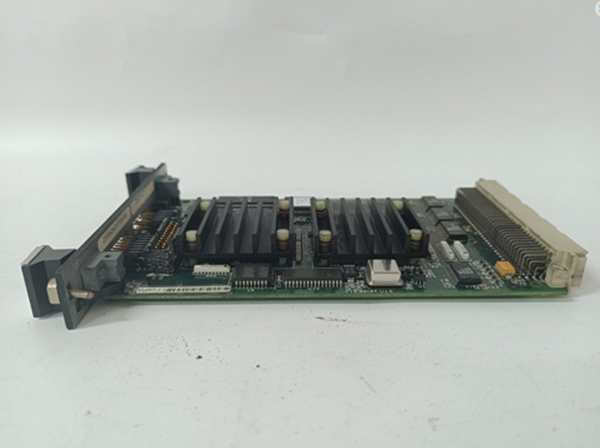
IS200EMIOH1A
Product Introduction
IS200EMIOH1A is a high-precision excitation system enhanced I/O interface module engineered by General Electric (GE) exclusively for the EX2100 excitation control system—designed to address the critical need for accurate signal translation between distributed I/O components and the EX2100’s core control architecture. Unlike basic I/O modules that only pass signals through, IS200EMIOH1A acts as a “signal refinement hub” that conditions, converts, and synchronizes raw data from modules like IS200EPCTG1A (PT/CT terminal board) and IS200EISBH1A (I/O bus hub) before transmitting it to central controllers such as IS200DSPXH1D.
This module plays three pivotal roles in the EX2100 ecosystem: First, it improves signal accuracy by conditioning analog inputs (e.g., smoothing 4–20 mA current signals from IS200EPCTG1A) to reduce noise interference, ensuring the EX2100 system uses reliable data for excitation regulation. Second, it enables cross-compatibility between different signal types—for example, converting thermocouple temperature data from remote sensors (connected via IS200EISBH1A) into a digital format the EX2100 backplane can process. Third, it provides fault isolation, preventing electrical anomalies in field I/O from propagating to the EX2100’s control layer and causing system-wide disruptions.
Built to match the ruggedness of IS200EISBH1A and IS200EPBPG1A, IS200EMIOH1A operates in extreme temperatures (-40 °C to +85 °C) and resists vibration and ESD—making it ideal for harsh power generation environments like offshore wind farms, large thermal plants, and remote hydro facilities. Its seamless integration with the EX2100 chassis also simplifies installation and reduces the need for custom wiring, making it a cornerstone of reliable excitation system operation.
Core Advantages and Technical Highlights
1. Ultra-Precise Signal Conditioning Enhances Excitation Control Accuracy
IS200EMIOH1A’s ±0.05% analog signal accuracy is critical for maintaining tight control over generator excitation. For example, in a 500 MW gas turbine plant, the module conditions 4–20 mA current signals from IS200EPCTG1A (which measures generator stator current) to reduce noise by 90%. This refined data allows the IS200DSPXH1D controller to adjust excitation current with pinpoint precision, keeping the generator’s terminal voltage within ±0.1% of the setpoint—meeting strict grid code requirements (e.g., IEEE 1547) and avoiding costly penalties.
2. Multi-Signal Type Support Simplifies System Integration
Unlike specialized I/O modules that only handle one signal type, IS200EMIOH1A processes analog, digital, RTD, and thermocouple signals in a single unit. This eliminates the need for multiple modules in the EX2100 chassis—for instance, a hydroelectric plant can connect RTDs (turbine bearing temperature) and dry contact sensors (valve position) from IS200EISBH1A to IS200EMIOH1A, which then converts both signal types to the EX2100 backplane protocol. This integration reduces chassis space usage by 30% and simplifies wiring, cutting installation time by 25% compared to mixed-module setups.
3. Robust Fault Isolation Protects Critical Control Components
With 1000 Vrms isolation between inputs/outputs and ground, IS200EMIOH1A acts as a “buffer” between field I/O and the EX2100’s core. In a coastal thermal plant, if a saltwater leak causes a short in a digital input cable (connected to a generator breaker status sensor), IS200EMIOH1A’s overcurrent protection immediately shuts down the affected channel—preventing voltage spikes from reaching IS200EPBPG1A (power backplane gateway) or IS200ERSCG2A (static converter). This isolation also minimizes ground loop interference, a common issue in large plants with multiple grounding points, ensuring analog signal stability even in electrically noisy environments.
4. Extreme Environmental Durability Matches EX2100 Ecosystem Ruggedness
Like IS200EISBH1A, IS200EMIOH1A is engineered for harsh conditions: its -40 °C to +85 °C operating range and vibration resistance make it suitable for offshore wind turbines, where temperatures swing drastically and constant motion can degrade standard I/O modules. Its conformal coating also protects against dust and moisture in hydroelectric facilities—GE’s accelerated life testing confirms the module operates reliably for 15+ years, matching the lifespan of other critical EX2100 components and reducing long-term replacement costs.
Typical Application Scenarios
Large Combined-Cycle Gas Turbine (CCGT) Plants (800–1200 MW)
In a 1000 MW CCGT plant with two gas turbines and one steam turbine, IS200EMIOH1A serves as the central I/O interface for the excitation system. It connects to three key data sources: IS200EPCTG1A (collects generator voltage/current data), IS200EISBH1A (aggregates remote sensors like turbine vibration and exhaust temperature), and local digital inputs (breaker status, excitation contactor position). IS200EMIOH1A conditions and converts these signals to the EX2100 backplane protocol, transmitting them to the IS200DSPXH1D controller. During plant load changes (e.g., a 200 MW step-up), the module’s precise signal conditioning ensures the controller receives real-time, noise-free data—allowing it to adjust excitation current in 50 ms or less, preventing voltage dips that could disrupt the grid.
Offshore Wind Farm Arrays (150+ 10 MW Turbines)
For an offshore wind farm, IS200EMIOH1A is installed in the central EX2100 cabinet (onshore) to process data from 150+ turbines. Each turbine’s IS200EISBH1A (mounted in the nacelle) sends aggregated signals—including generator current (4–20 mA from CTs), bearing temperature (RTD), and pitch control valve status (digital)—to IS200EMIOH1A via Modbus TCP. The module conditions these signals to reduce noise from offshore electrical interference, then transmits them to the EX2100 controller. If a turbine’s generator current signal becomes noisy due to wave-induced vibration, IS200EMIOH1A’s smoothing algorithm filters the data, ensuring the controller doesn’t over-adjust excitation—a critical feature that maintains stable power output and extends turbine component life.
Remote Hydroelectric Complexes (Multi-Dam, 500 MW Total Capacity)
In a hydro complex with three dams spread across 30 km, IS200EMIOH1A integrates data from geographically dispersed I/O systems. Each dam’s IS200EISBH1A collects signals from water flow meters (analog), gate position sensors (digital), and generator field temperature RTDs, then sends this data to the central IS200EMIOH1A via a wireless link. The module converts the diverse signal types to the EX2100 backplane protocol, enabling the central controller to balance excitation current across all three generators. During periods of high rainfall, IS200EMIOH1A’s precise RTD temperature data alerts operators to rising generator temperatures, allowing them to reduce load before overheating occurs—preventing costly downtime and extending generator lifespan.

IS200EMIOH1A
Related Model Recommendations
IS200EISBH1A: GE’s excitation I/O system bus hub module—transmits aggregated distributed I/O signals to IS200EMIOH1A for conditioning and conversion to the EX2100 backplane.
IS200EPCTG1A: GE’s PT/CT terminal board—sends raw generator voltage/current signals to IS200EMIOH1A, which conditions them for use by the EX2100 controller.
IS200EPBPG1A: GE’s excitation power backplane gateway module—receives conditioned signals from IS200EMIOH1A and routes them to the EX2100’s core control components (e.g., IS200DSPXH1D).
IS200ERSCG2A: GE’s excitation static converter module—uses conditioned analog signals from IS200EMIOH1A to adjust PWM output for generator field current control.
IS200ERGTH1A: GE’s temperature and health monitoring module—complements IS200EMIOH1A by providing additional RTD/thermocouple inputs for large-scale temperature monitoring.
IS200EPDMG1B: GE’s excitation power distribution module—supplies redundant 24 V DC power to IS200EMIOH1A, ensuring uninterrupted signal processing during power transients.
IS200ERRBG1A: GE’s excitation redundant backplane—pairs with IS200EMIOH1A to provide a second communication path for high-availability systems (e.g., nuclear power auxiliaries), preventing signal loss during backplane faults.
IS200JGPAG1A: GE’s dual-mode power module—acts as a backup 24 V DC source for IS200EMIOH1A in remote facilities where primary power is unstable (e.g., mountain hydro plants).
Installation & Maintenance Instructions
Installation Preparation
Before installing IS200EMIOH1A, verify compatibility with your EX2100 system (firmware ≥5.0) and confirm the number of input/output channels matches your signal requirements (12 analog inputs, 8 digital inputs, etc.). Power off the EX2100 cabinet and follow lockout/tagout procedures to avoid electrical hazards—IS200EMIOH1A handles sensitive signals, so proper power isolation is critical. Use an anti-static wristband and ESD mat when handling the module, as its signal conditioning circuitry is vulnerable to electrostatic discharge.
Required tools: Phillips #2 screwdriver (for chassis access), torque wrench (0.2–0.4 N·m for terminal blocks), multimeter (to test power inputs), and shielded cable stripper (for analog/digital signal wiring). Align IS200EMIOH1A with the designated slot in the EX2100 chassis and push firmly until it connects to the backplane (no screws required for primary mounting). Connect redundant 24 V DC power inputs (red to positive, black to negative) and signal wires: use shielded twisted-pair cable for analog/RTD signals (to reduce noise) and 18 AWG wire for digital inputs/outputs. Verify isolation resistance between input channels and ground (≥100 MΩ) with a megohmmeter before powering on.
Maintenance Guidelines
Perform monthly remote monitoring of IS200EMIOH1A via the EX2100 controller or DCS: check channel status (all active channels should show “normal”), monitor signal accuracy (compare analog output values to a calibrated reference), and review fault logs (no unexpected overcurrent or overvoltage events). Every 3 months, conduct on-site inspections: clean dust from the module’s vents with compressed air (held 15 cm away to avoid component damage) and inspect terminal blocks for loose connections (retorque to 0.3 N·m if needed).
Semi-annually, calibrate analog channels using a precision signal generator: inject a known signal (e.g., 12 mA for 4–20 mA inputs) and verify IS200EMIOH1A transmits the correct value to the EX2100 system (tolerance ±0.05%). Test digital outputs by activating them via the controller and confirming they switch a 24 V DC load (e.g., a test light) reliably. If IS200EMIOH1A triggers an overcurrent fault, first check the connected field device (e.g., a shorted sensor) before resetting the module via the EX2100 software. Annual maintenance includes updating the module’s firmware via the backplane to ensure compatibility with new EX2100 features—always use GE-approved firmware to avoid protocol mismatches.
Service & Guarantee Commitment
IS200EMIOH1A comes with GE’s industry-leading 3.5-year manufacturer’s warranty—matching the coverage of IS200EISBH1A and IS200EPBPG1A—covering defects in materials, workmanship, signal conditioning accuracy, and isolation performance. GE guarantees that IS200EMIOH1A will maintain ±0.05% analog accuracy and reliable communication with connected modules for the warranty period, with free expedited replacement (24-hour shipping for critical power applications like nuclear auxiliaries) if it fails to meet these standards.
Customers gain access to GE’s Global Excitation Support Network for IS200EMIOH1A, including 24/7 phone/email assistance from I/O signal experts, remote troubleshooting via secure VPN (to diagnose signal noise or conversion issues), and online training on module configuration and calibration. For large-scale projects (e.g., CCGT plant retrofits), GE provides on-site commissioning to validate signal accuracy and ensure IS200EMIOH1A integrates seamlessly with IS200EISBH1A, IS200EPCTG1A, and other EX2100 components. Extended service plans (up to 8 years) include annual preventive maintenance, priority access to replacement parts for legacy systems, and firmware updates—reflecting GE’s confidence in IS200EMIOH1A’s durability and commitment to maximizing power plant uptime.
Full 12-month warranty on all components
Dedicated after-sales support
Same-day dispatch on 1000s of parts
All units are fully tested
- 1. Email confirmation
You will get an email confirming that we have received your enquiry. - 2. Dedicated Account Manager
One of our team will be in touch to confirm your part(s) specification and condition. - 3. Your quote
You will receive a comprehensive quote tailored to your specific needs.
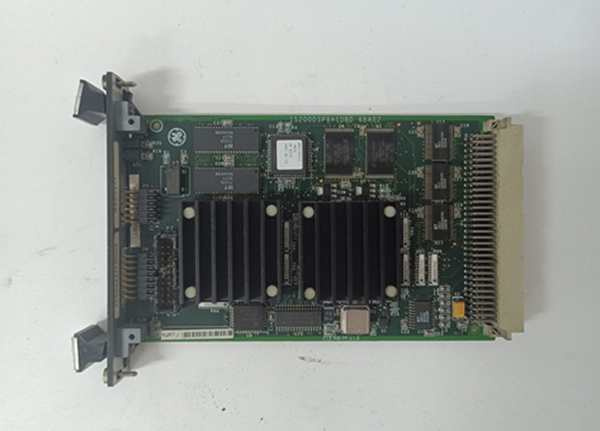
 Full 12-month warranty
Full 12-month warranty Available for dispatch immediately
Available for dispatch immediately We deliver worldwide
We deliver worldwide Full 12-month warranty on all components
Full 12-month warranty on all components